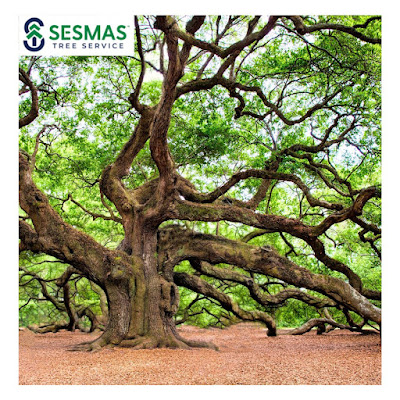The Role of Certified Arborists in Tree Health and Safety
Trees are vital to our environment, providing shade, enhancing property aesthetics, improving air quality, and supporting local wildlife. However, maintaining the health and safety of trees requires expertise and specialized knowledge. This is where certified arborists play an essential role. In this blog, we'll explore the importance of certified arborists, their role in ensuring tree health, and why hiring one is a smart investment for your property.
What is a Certified Arborist?
A certified arborist is a professional who has been trained in the art and science of planting, caring for, and maintaining trees. To become certified, an arborist must pass rigorous examinations developed by the International Society of Arboriculture (ISA), which covers all aspects of arboriculture. This certification ensures that the arborist has a deep understanding of tree biology, diagnosis, maintenance practices, and safety protocols.
Key Responsibilities of Certified Arborists
1. Tree Health Assessment
Certified arborists are trained to assess the overall health of trees. They can identify signs of disease, pest infestations, or structural issues that may not be apparent to the untrained eye. Early detection of problems allows for timely intervention, which can prevent further damage and potentially save the tree.
2. Proper Pruning Techniques
Pruning is crucial for maintaining tree health, safety, and aesthetics. Improper pruning can lead to tree stress, disease, or even death. Certified arborists understand the correct techniques for pruning different species and know when and how to prune to promote healthy growth, prevent hazards, and improve the tree’s structure.
3. Safe Tree Removal
Tree removal is a complex and dangerous task that should only be performed by professionals. Certified arborists are skilled in safely removing trees that pose a risk to property or people. They assess the tree’s condition, determine the safest method of removal, and ensure that the process is carried out with minimal disruption to the surrounding environment.
4. Disease and Pest Management
Trees can suffer from a variety of diseases and pests, which can severely affect their health. Certified arborists have the knowledge to diagnose and treat these issues effectively. They can recommend appropriate treatments, whether it’s through the use of pesticides, natural methods, or cultural practices, to protect your trees from harm.
5. Soil and Root Care
The health of a tree is closely linked to the condition of its roots and the soil in which it grows. Certified arborists can assess soil quality, compaction, and drainage issues, and they provide solutions to improve the tree’s growing conditions. They can also recommend mulching, fertilization, and other soil amendments to promote healthy root development.
6. Planting and Transplanting
Selecting the right tree for the right location is crucial for long-term success. Certified arborists can guide you in choosing tree species that are well-suited to your climate, soil type, and landscape goals. They also ensure proper planting techniques, which are essential for the tree’s establishment and growth. When transplanting is necessary, arborists know how to minimize stress and ensure the tree’s survival.
7. Emergency Tree Care
Storms, high winds, and other natural events can cause significant damage to trees, creating hazardous situations. Certified arborists provide emergency tree care services, such as removing fallen trees, cutting back broken branches, and stabilizing damaged trees. Their quick response can help prevent further damage to property and ensure safety.




Comments
Post a Comment